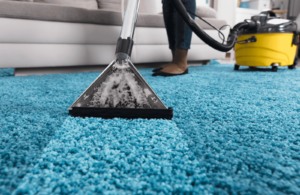Roofing is an important part of any building. It provides practical function, insulation, and aesthetic appeal. It protects a structure from weather elements and allows for proper electrical wiring and piping functioning.
A roof’s surface can be constructed from various materials, and the material used determines the type of roof.

A roof is one of the largest and most important homeowner’s investments. As such, it’s important to select the roofing material that offers protection and aesthetics while meeting budget requirements and home owner preferences. There are many options from which to choose, including traditional asphalt shingles, clay tiles, slate, wood shakes and metal.
Asphalt shingles come in a variety of architectural styles from which to choose, from 3-tab to dimensional shingle options. They are available in multiple colors and textures to complement any home design, including some that mimic other roofing materials, like the authentic look of slate or cedar shakes, without their drawbacks. For example, IKO’s Royal Estate shingle replicates the authentic color and texture of slate while their Armourshake shingle emulates the more mature grey that cedar shakes naturally develop over time.
Clay tile has been used for roofs for millennia and is known for its durability, resistance to sun and water, and beauty. It is heavier than most other roofing materials, and it may not be the best choice if your current roof structure cannot support it. Slate is one of the most beautiful roofing materials and also lasts a very long time, but it is expensive and requires specialized installation.
Both wood shingles and shakes provide a natural, rustic appearance to any house, adding to its charm and increasing its value. However, they are expensive and not as durable as other roofing materials. They are also not recommended in areas prone to wildfires.
Membrane roofing uses durable ethylene propylene diene monomer (EPDM) or thermoplastic sheets to form a waterproof barrier for flat roof areas. It is most often seen on commercial structures, but it can be applied to low-sloped residential roofs as well.
Flashing is a thin sheet of metal that covers gaps between other roofing materials. It is most often used in areas where leaks are more likely to occur, such as around chimneys and vents, skylights, wall penetrations, and roof valleys. There are several different types of flashing, including galvanized steel, stainless steel and aluminum. It can be sold pre-cut and flashed together, or the roofer can cut it on-site and apply it as needed.
Installation
Roof installation is a meticulous process that demands attention to detail. A well-constructed and maintained roof protects the interior of a building from weather elements like rain, snow, wind, sunlight, and provides insulation, structural support, and enhances curb appeal. Depending on the type of roofing chosen, there are many different steps in the process of installing or replacing a roof.
To begin the process, we’ll inspect your existing roof to determine the condition of the underlying structure and whether it can support the new covering. We’ll also take measurements of your roof to prepare a quote for you. Once you agree with the estimate and sign the contract, our team will begin work on your roof.
Once the crew begins the actual re-roofing, they’ll first set up protective measures on your property. Tarps are attached to the roof line and/or wooden boards are put up to cover anything around the base of your home to keep roofing debris from falling and damaging landscaping or pools. They’ll also cover your attic and move anything off of the deck or patio to ensure vehicles stay on paved surfaces.
The roof structure is then installed, along with underlayment and felt paper. The areas where the roof slopes meet, forming “V” angles, are called valleys and must be waterproofed. We apply a special roofing caulk to the raw edges and shingle seams, ensuring water will not penetrate the shingles or the structure. The shingles are then installed over the underlayment and seams, and any necessary flashing is added.
Maintenance
A roof is a structure that provides insulation, protects occupants of a building from weather elements, and adds to the aesthetics of a home or office space. Roofing is typically constructed of wood or metal, although it can also be made from other materials like clay, sand and soil, cut turf (known as green or sod roofs) and even adobe.
To ensure the long life of a roof, maintenance procedures should be regularly performed to identify and correct small problems before they become large, costly issues. These procedures should include a detailed inspection of the roof structure, roof deck and underlayment. It is especially important to examine the shingles for excessive wear or damage, as well as deteriorating caulking around roof penetrations and vent pipes. In geographic locations with varied weather patterns, these inspections should be done on a seasonally-specific basis.
Inspecting the surface of a roof for localized ponding or standing water is another critical task. This water can rot or decay roofing surfaces and cause structural damage to a roof system, as well as interior leaks. Another task to consider is ensuring that drains are unobstructed and that the chimney and vents are in good condition.
Lastly, it is crucial to inspect the stairs, crossovers and platforms that allow facility personnel to access the roof for signs of deterioration or safety concerns. This is particularly important if electrical, harmful chemicals or extremely hot equipment and pipes are located on the rooftop. If the safety measures aren’t in place, a hazardous environment can develop that will result in injury or death to maintenance workers. This could be very expensive for the facility owner and could cause a delay or interruption in business operations.
Repairs
If your roof is in need of repair, there are different options to consider. Re-roofing is the most simple, as it involves placing a new shingle overlay or roofing material over existing ones. However, it doesn’t address any underlying issues and doesn’t protect as well as a full roof replacement. Furthermore, since it’s covering up damages rather than repairing them, re-roofing can void, or shorten, your warranty.
To fix a leak, you need to carefully inspect the area and identify any underlying problems. You’ll need to clear the work area, remove damaged materials, and carefully measure and cut any replacements. Ensure all parts are properly inserted and sealed to prevent future water intrusion and maintain the integrity of your roof.
Flashing is metal that’s (often) hand-bent to fit the application. It’s fixed to the roof through a combination of nails and sealant, depending on how it was originally installed. To replace flashing, first locate the old piece and use it as a template for cutting and bending the new one. Once you’ve bent and inserted the new piece, apply roof cement or sealant.








